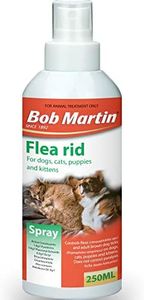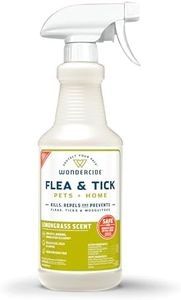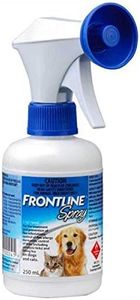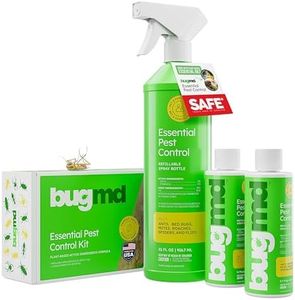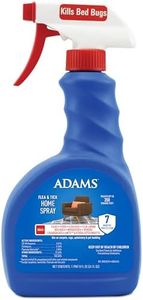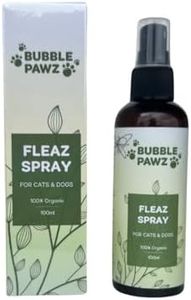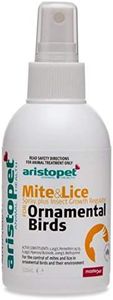We Use CookiesWe use cookies to enhance the security, performance,
functionality and for analytical and promotional activities. By continuing to browse this site you
are agreeing to our privacy policy
10 Best Home Flea Sprays
From leading brands and best sellers available on the web.Buying Guide for the Best Home Flea Sprays
Choosing the right home flea spray is important for effectively controlling fleas in your living space while keeping your household and pets safe. With many options available, you'll want to focus on what each spray is capable of, how it works, and how it fits your situation—like whether you have pets, children, allergies, or specific surfaces to treat. The right product should balance effectiveness, safety, and ease of use, so you can efficiently tackle a flea problem without unwanted side effects.Active IngredientsActive ingredients are the chemicals or natural compounds that kill fleas or disrupt their life cycle. This is crucial because it determines not only how effective the spray is but also how safe it will be for your family and pets. Some sprays use synthetic insecticides for quick knock-down, while others rely on natural oils for a gentler approach. Those sensitive to chemicals or with pets that roam indoors should consider sprays with pet-safe, less harsh ingredients. If you want fast action and don’t have sensitive people or pets, traditional chemicals may suit you. If you prefer natural treatments or have concerns about toxicity, look for plant-based options.
Residual Effect (Longevity)Residual effect refers to how long the spray continues to work after application. This is important because a longer-lasting spray will keep controlling fleas over time, reducing the need for frequent reapplication. Products can range from providing protection for a few days to several weeks. If you’re dealing with a severe infestation, a longer residual effect helps break the flea life cycle. For occasional prevention, a short-acting spray may be enough. Choose based on how bad your flea problem is and how often you are willing to reapply the product.
Safety for Pets and ChildrenSafety for pets and children concerns whether the spray can be used in homes with animals or young kids without causing harm. This is crucial because certain chemicals can be toxic to pets—especially cats—or dangerous if touched or inhaled by children. Sprays are often labeled as pet-safe or child-safe, but always check the fine print. If your home has pets or children, opt for specifically marked safe products, follow all usage instructions, and consider how quickly treated areas can be reoccupied.
Coverage AreaCoverage area describes how much surface the spray can treat, usually indicated in square feet or simply by the can size. This is important because you want enough product to treat all affected areas without running out halfway. Smaller coverage is suitable for spot treatments, while larger homes or heavily infested areas will need higher-volume sprays. Assess the size of the space you intend to treat—whether it’s a single room, carpet, or you need the whole house—and choose accordingly to ensure you can cover all necessary surfaces.
Ease of ApplicationEase of application refers to how simple the product is to use. Some sprays come in aerosol cans for quick use, while others might be concentrates you need to dilute and apply with a spray bottle. This matters because a product that’s difficult to use may result in uneven coverage or take too much time. If you want a mess-free and fast option for small jobs, choose a ready-to-use spray. If you need to treat larger spaces or need cost savings, consider concentrates but make sure you are comfortable preparing and applying them.
Odor/ScentOdor or scent relates to the smell left behind by the spray. Some sprays have strong chemical odors, while others are fragrance-free or use natural scents like citrus. This matters because strong odors can be unpleasant or trigger sensitivities. If you or family members are sensitive to smells or prefer not to have lingering scents, seek out low-odor or unscented products. If you don’t mind or enjoy fragranced options, you might select one with a preferred scent.
